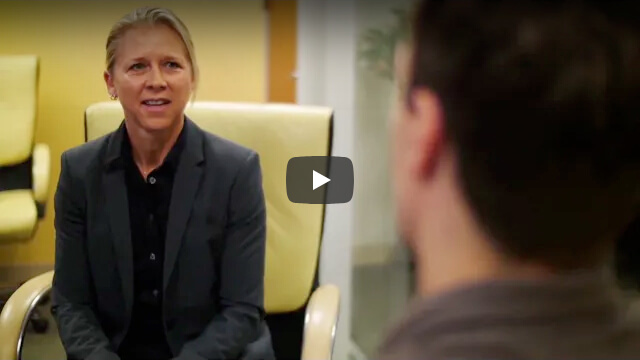Please be advised that the following topic is for informational purposes only and not a legal matter currently handled by our firm. If you need further assistance regarding this particular topic, you can contact your local Bar Association for a referral to an attorney who may be able to address your inquiry in more detail.
San Francisco Is The Birthplace of Rideshare Apps
The two major rideshare service companies—Uber and Lyft—originated right here in San Francisco. And since their beginnings, they have grown to become billion-dollar companies.
However, as convenient as Uber and Lyft have made hailing a ride to get around town, they have also contributed to a significant increase in traffic and traffic accidents. A report by MIT has shown that since the two companies were founded, traffic congestion has increased by 0.9%, and the duration of traffic jams has increased by 4.5%.
In San Francisco alone, two-thirds of the 62% traffic increase of the past two years has been caused by the increase in Uber and Lyft drivers on the roads.
Naturally, with an increase in traffic congestion, there comes an increase in car accidents, including Uber accidents and Lyft accidents specifically.
But when it comes to deciding which rideshare service in San Francisco to choose, is one a better choice than the other? Though the two companies started around the same time, they are not the same or created equal.
So, let’s take a look at the differences between Uber and Lyft.
And if you have questions about a rideshare accident in San Francisco and need help filing a claim, don’t hesitate to reach out to our legal team for assistance.
Uber vs. Lyft in San Francisco: What are the Differences?
Though most people think Uber came first, Lyft was actually founded in 2007 as Zimride. It was later relaunched as Lyft in 2012, though the official name change didn’t take place until 2013.
Uber was launched in 2009. But though it came after Lyft, Uber grew and expanded much more quickly. Now, Uber is an international company with services in over 80 countries, while Lyft only operates in the U.S. and Canada.
So, what else makes Uber and Lyft different?
Uber vs. Lyft: Services
The services offered by these two rideshare companies vary greatly.
Uber Services:
Uber ride services include:
- UberX
- UberXL
- Uber Comfort
- Uber Black
- Uber Lux
- Uber SUV
- Uber Pool
- Uber Taxi
- Uber Green
- UberWAV
- Uber Flash
- Uber Pet
- Uber Auto
Additional Uber services include:
- Uber Eats: for food delivery
- Uber Connect: for package delivery
- Uber Freight: for freight shippers in the trucking industry
Lyft Services:
Lyft ride services include:
- Lyft
- Lyft XL
- Lyft Lux
- Lyft Line
- Priority Pickup
- Shared Rides
- Lyft Wait & Save
- Preferred Mode
Additional Lyft services include:
- Food delivery
- Rental car reservations
- Transit schedules
Uber vs. Lyft: Pricing
Both of these apps charge their riders based on the time a trip takes and the distance traveled. There are also base fare prices depending on exactly where you are and where you’re going, as well as fees at certain times that can increase the trip cost, such as surcharges for increased demand. As such, there is no way to give a set price, as there are many variables that can affect the rate of the trip.
Uber Pricing:
The various Uber pricing and fee rates include:
- Base fare rate
- Minimum fare rate
- Time rate
- Distance rate
- Duration rate
- Surge pricing
- Service fees
- Booking fees
- Cancellation fees
- Toll charges
Lyft Pricing:
Lyft fees and pricing rates include:
- Base fare
- Minimum fare
- Maximum fare
- Prime time demand
- Cost per minute
- Cost per mile
- Service fees
- Platform fees
- Third-party fees
Uber vs. Lyft: Availability
Though Uber and Lyft started around the same time, Uber did take off and become more popular initially. This means there are often more Ubers available than there are Lyfts, but it can vary by state if you are just looking at the U.S. numbers.
In California, for example, Uber estimates that they have around 209,000 active drivers on the road per quarter. Worldwide they have an estimated 4-5 million drivers. In comparison, Lyft only has an estimated two million drivers between the U.S. and Canada.
Bigger cities like San Francisco also tend to have more available drivers. So catching a Lyft or an Uber in San Francisco will be much easier than catching one in a small town.
Overall, even though Lyft is growing and constantly adding more drivers, there still tend to be more Uber drivers available than Lyft drivers.
Uber vs. Lyft: Safety and Security
Both Lyft and Uber have had criticism over safety concerns, but overall both apps are primarily considered safe to use.
Uber Safety:
Uber conducts background checks on their drivers, they require liability insurance, and the app lets you share your location with friends, family, and Uber in case something happens.
Users can also see their driver’s picture, license plate number, car model, and car color to ensure they are being picked up by the right person.
You can also contact emergency dispatch directly through the Uber app.
Lyft Safety:
Lyft was initially praised as being a safer app than Uber due to fewer allegations, but eventually, their own safety issues began to arise. Still, Lyft is also considered a safe app to use, just as Uber is.
Lyft vets all of its drivers and keeps track of a user’s location while on a ride in case anything goes wrong. They also have a mandatory safety education program to ensure their drivers maintain a safe and welcoming environment.
Uber Accident vs. Lyft Accident: How Are Claims Handled?
When it comes to Uber vs. Lyft in San Francisco, the primary concern of riders should be how these two companies handle personal injury claims filed against them.
Technically, both companies handle insurance and liability in much the same way. However, because Uber is the bigger company, they potentially have their own more powerful legal team defending them, which could make it harder to get a high-value Uber accident settlement. But this is in no way a guarantee. Lyft, though not as big as Uber, also has a strict policy and a legal team to protect itself.
If you do get into an Uber accident or a Lyft accident, who you can file a claim against and how much money you can recover will depend on the “driving period.” Both Uber and Lyft base liability and insurance on these three periods:
- Offline: If the Lyft or Uber driver is not logged into the app and taking ride requests, Uber and Lyft are not responsible if an accident occurs. In this case, the driver’s personal liability insurance would cover the accident.
- Contingent period: If the driver is logged onto the app but has not accepted a ride and is not transporting a passenger, Uber and Lyft’s third-party liability coverage applies. This includes:
- $50,000 per person for bodily injury
- $100,000 per accident for bodily injury
- $25,000 per accident for property damage
- Active: If the driver has accepted a ride request or is actively transporting a passenger, both companies have a $1 million insurance coverage policy that applies. However, the full $1 million is only available if the rideshare driver was at fault for the accident. If a third party was at fault, Lyft and Uber only provide $250,000 in coverage.
Contact a Qualified San Francisco Uber and Lyft Accident Attorney
Both Uber and Lyft offer great services, and choosing which one is better is ultimately up to you and your preferences. However, it is a fact that traffic congestion and, thus, traffic accidents have increased since these two services hit the market. And handling a personal injury claim that involves a large company like Uber or Lyft can be challenging.
At Sally Morin, our personal injury lawyers can handle the complicated legal issues involved in your claim so that you can put all of your focus and energy into recovering from your injuries. With a trustworthy, experienced Uber accident or Lyft accident attorney by your side, there is no reason to worry and stress about your situation.
For more information about rideshare accidents, visit our Uber Accident FAQ page.

